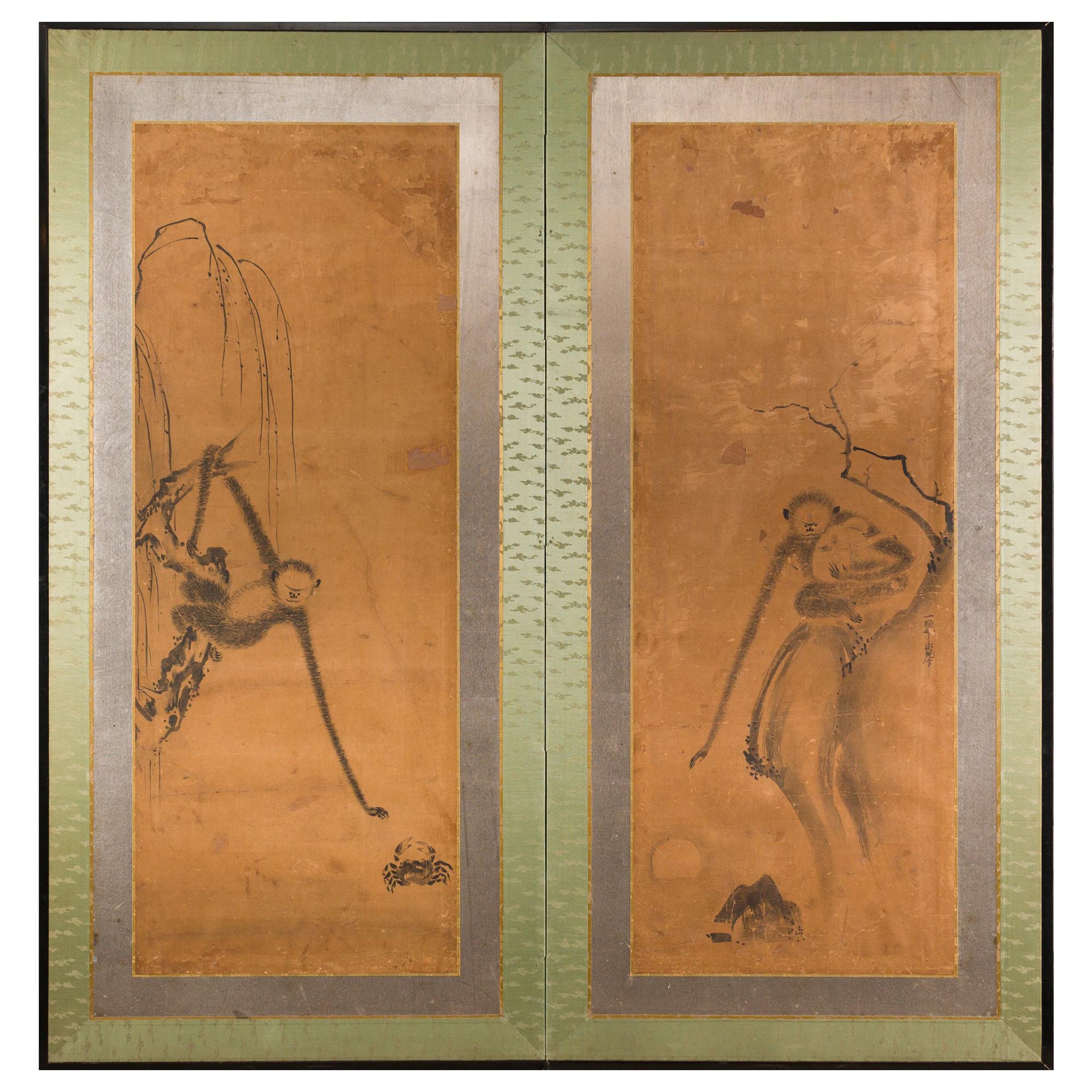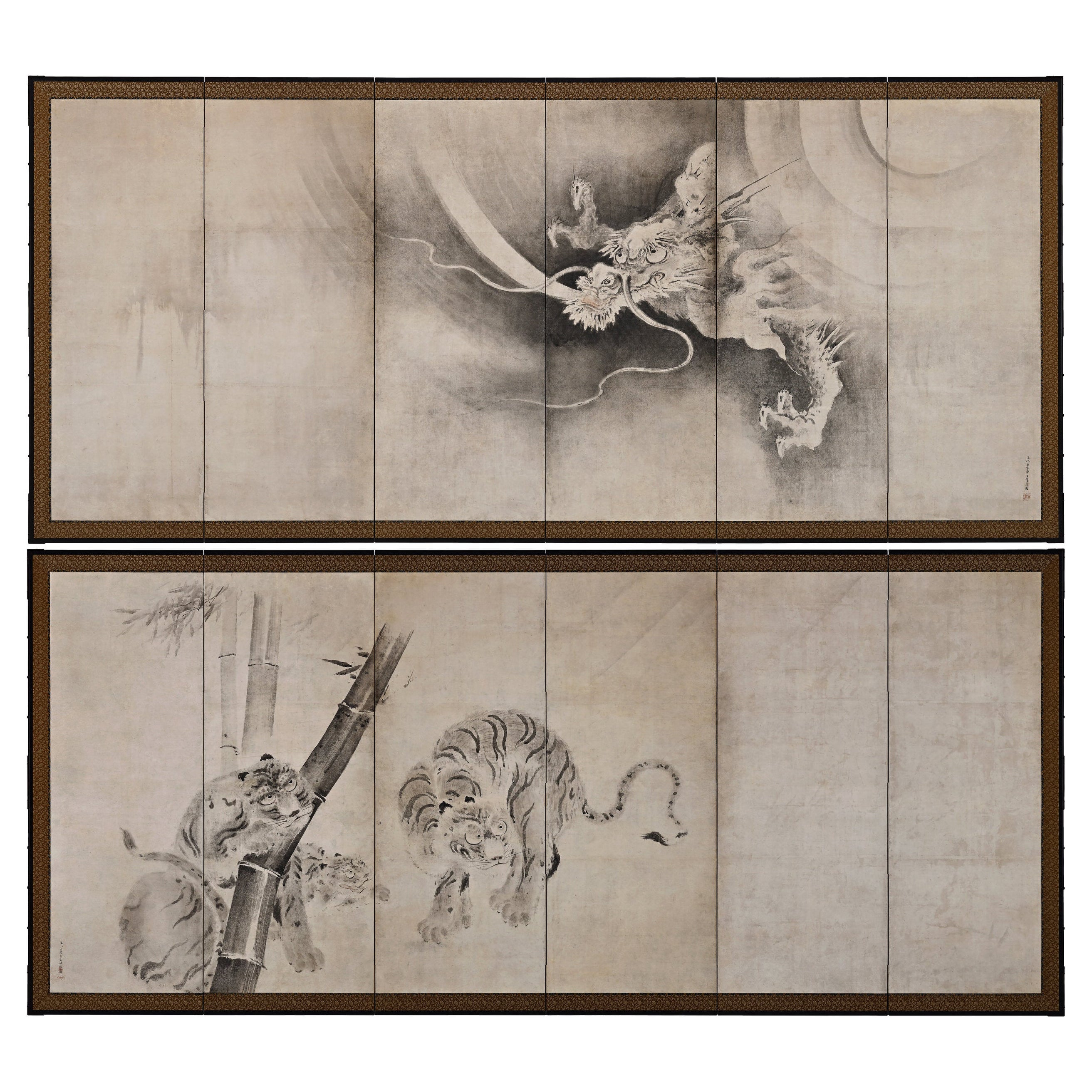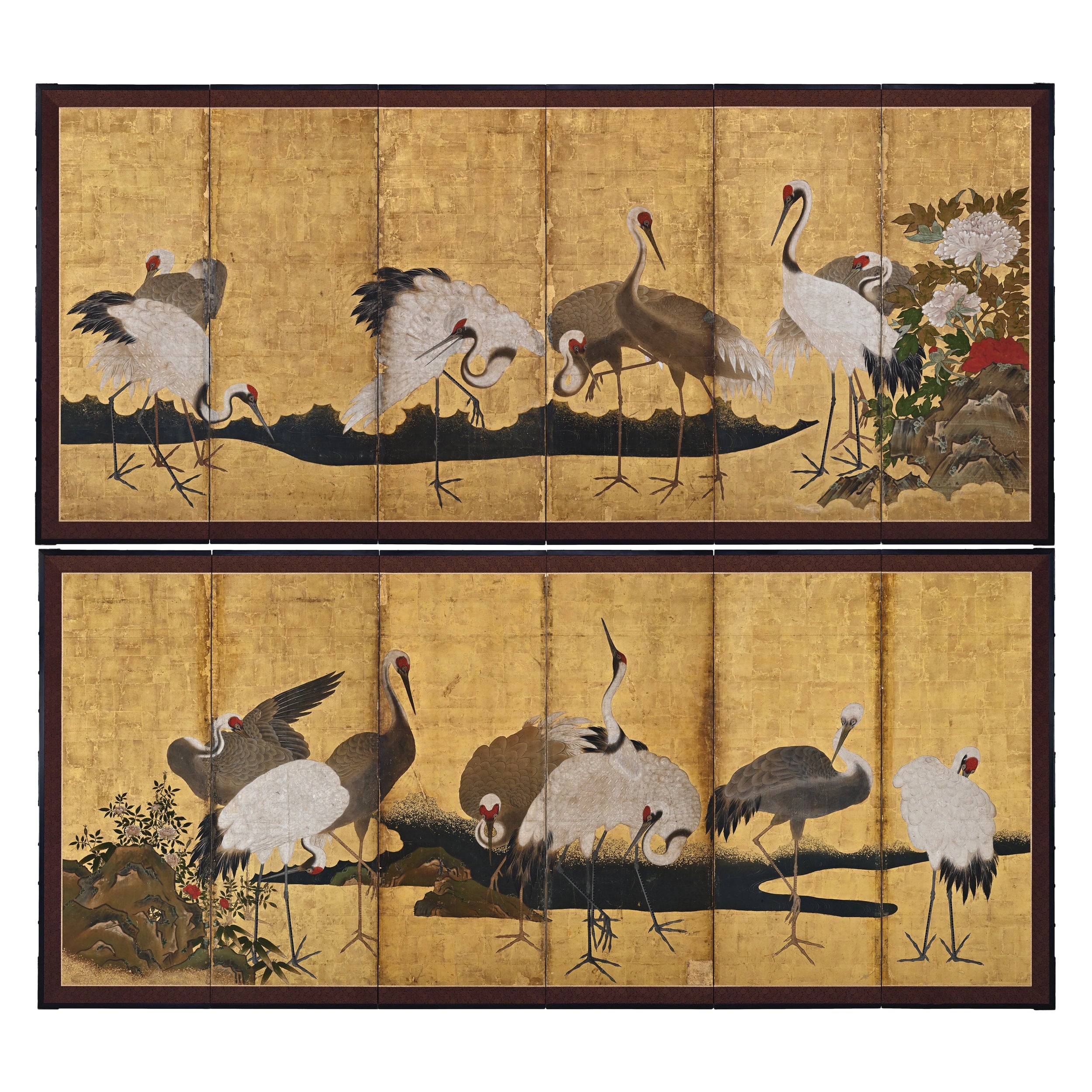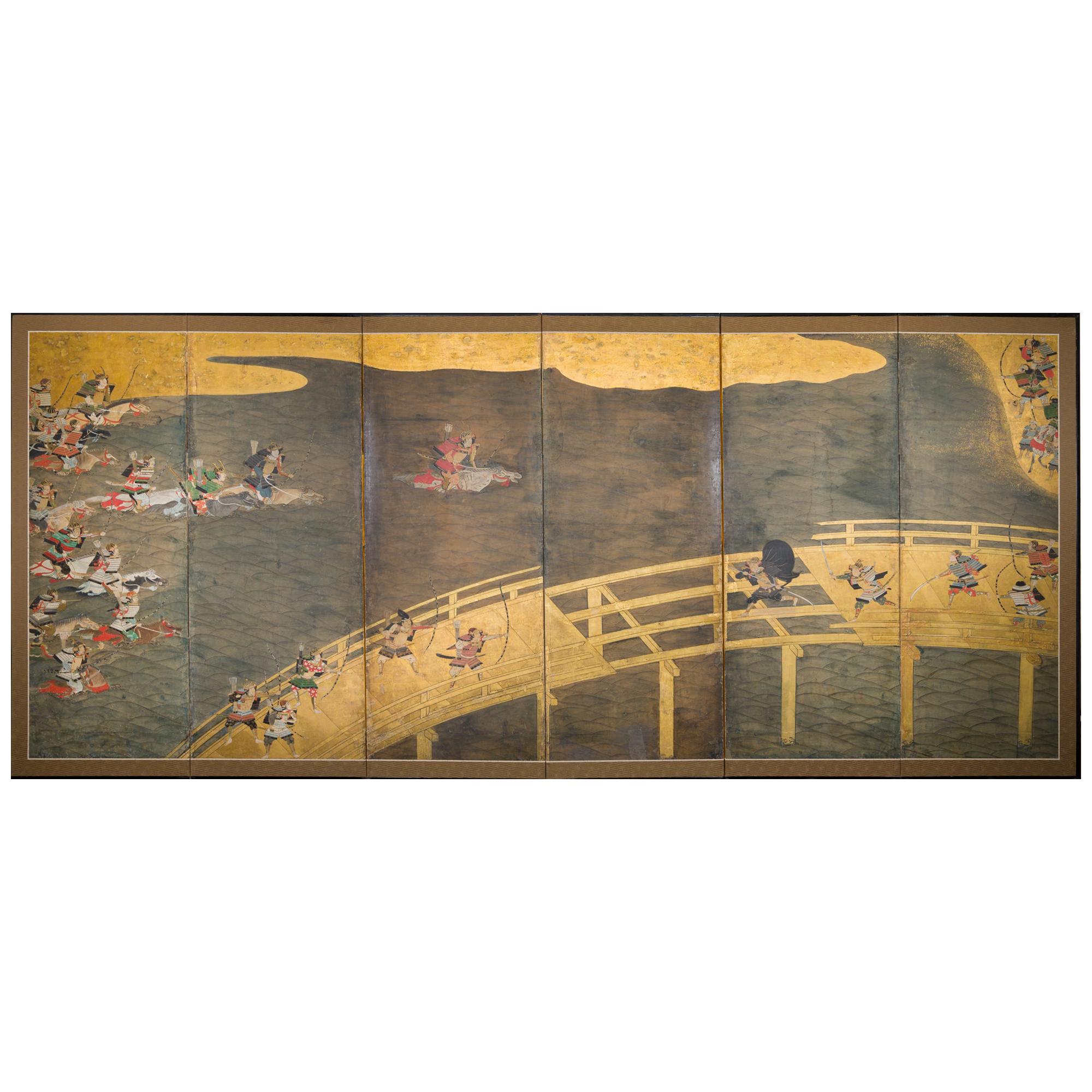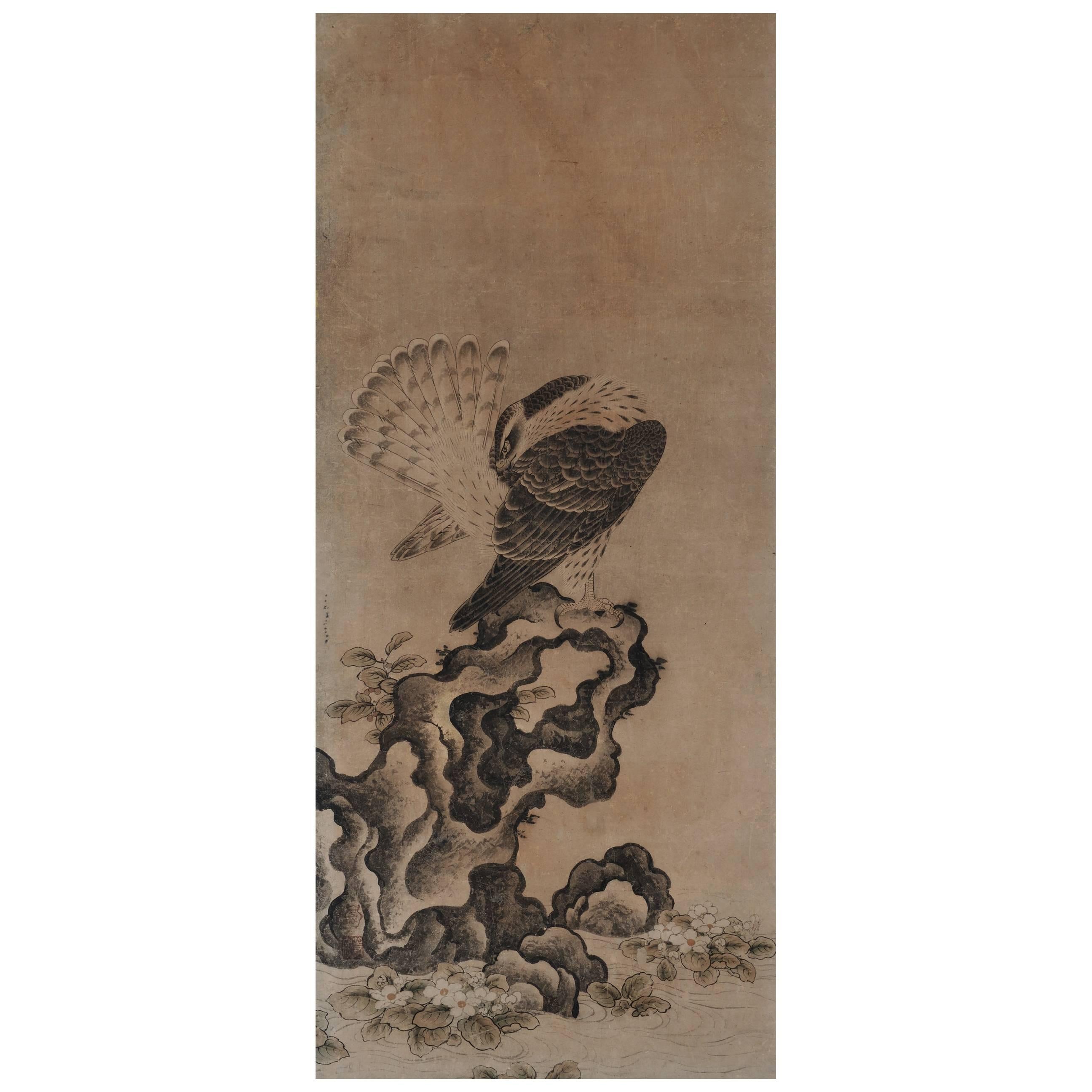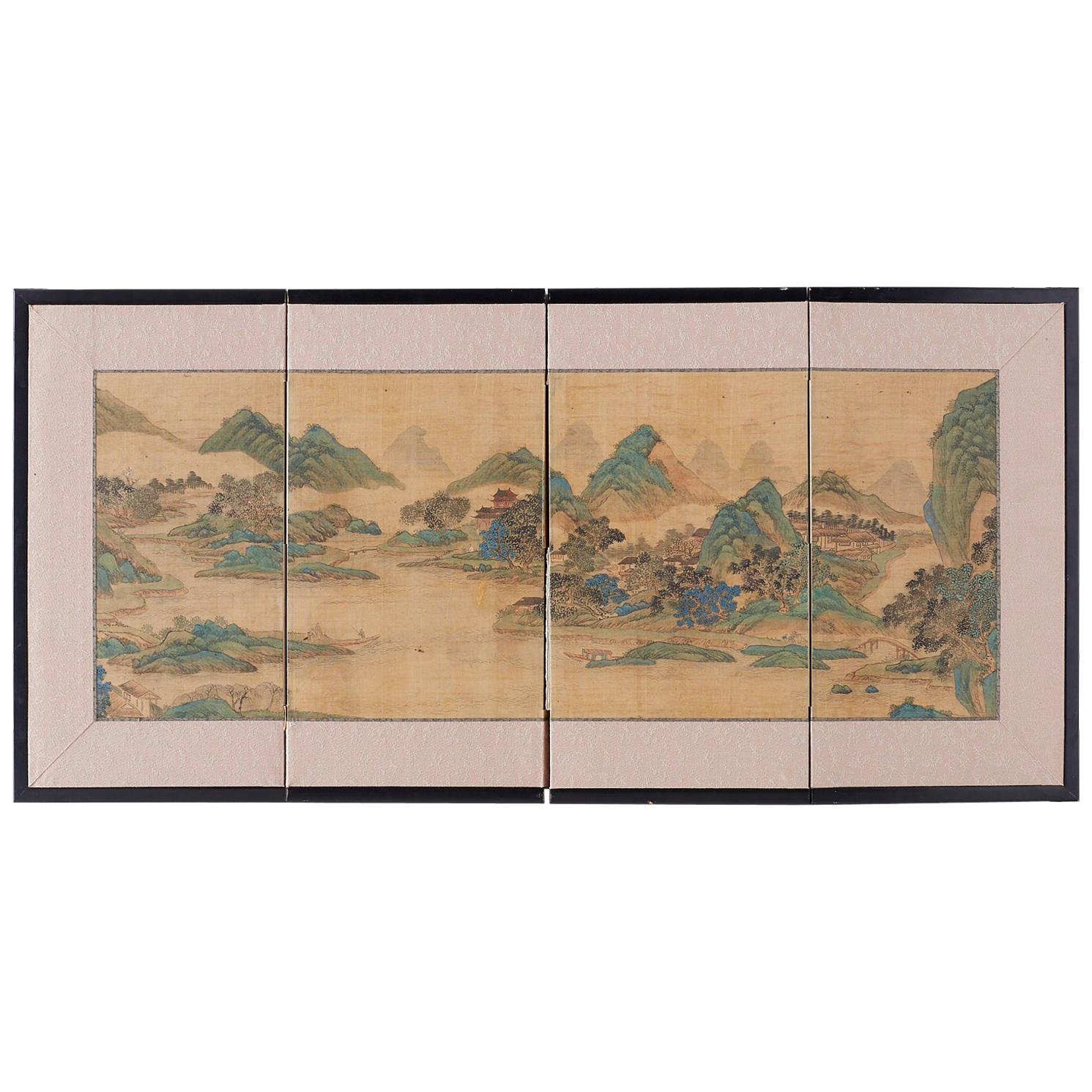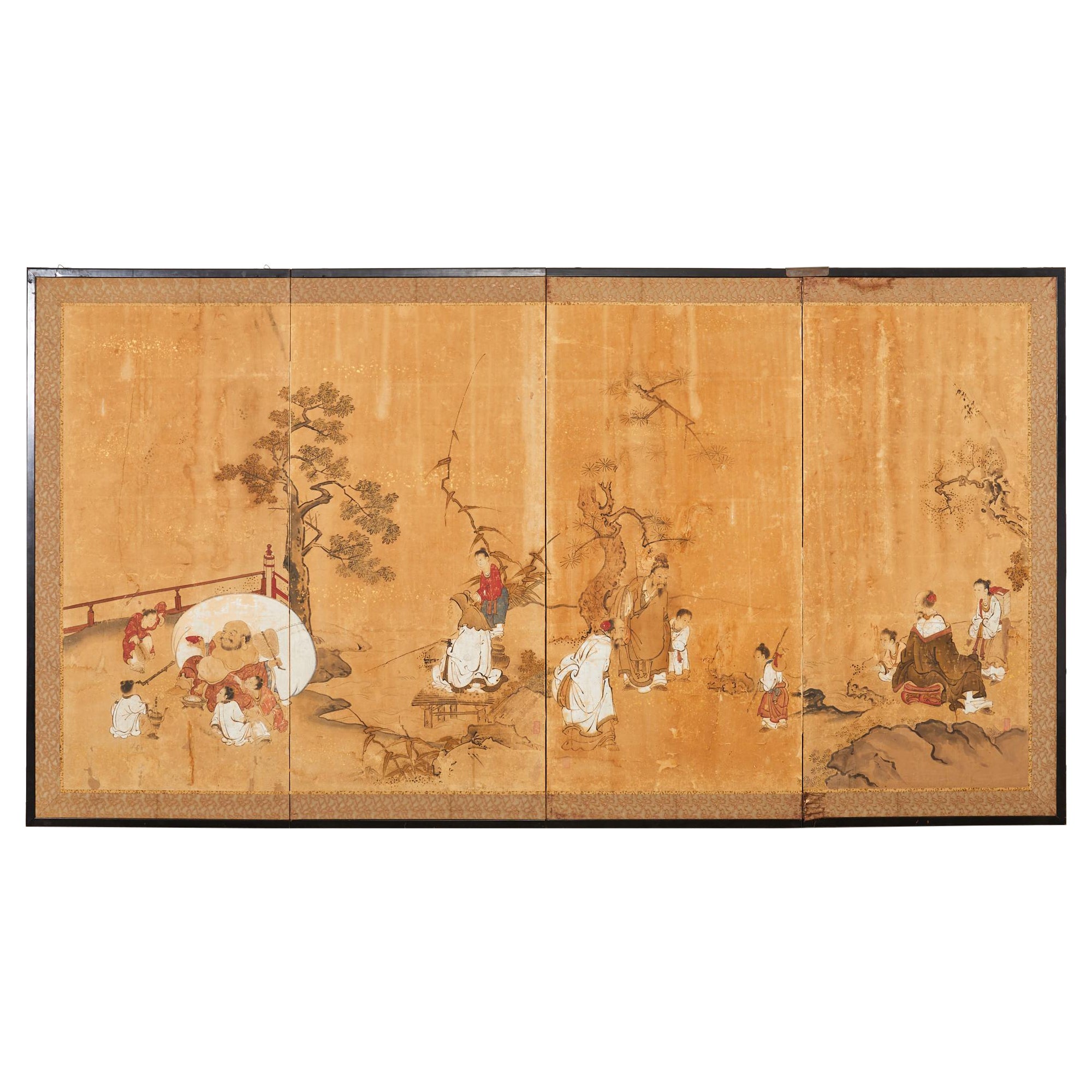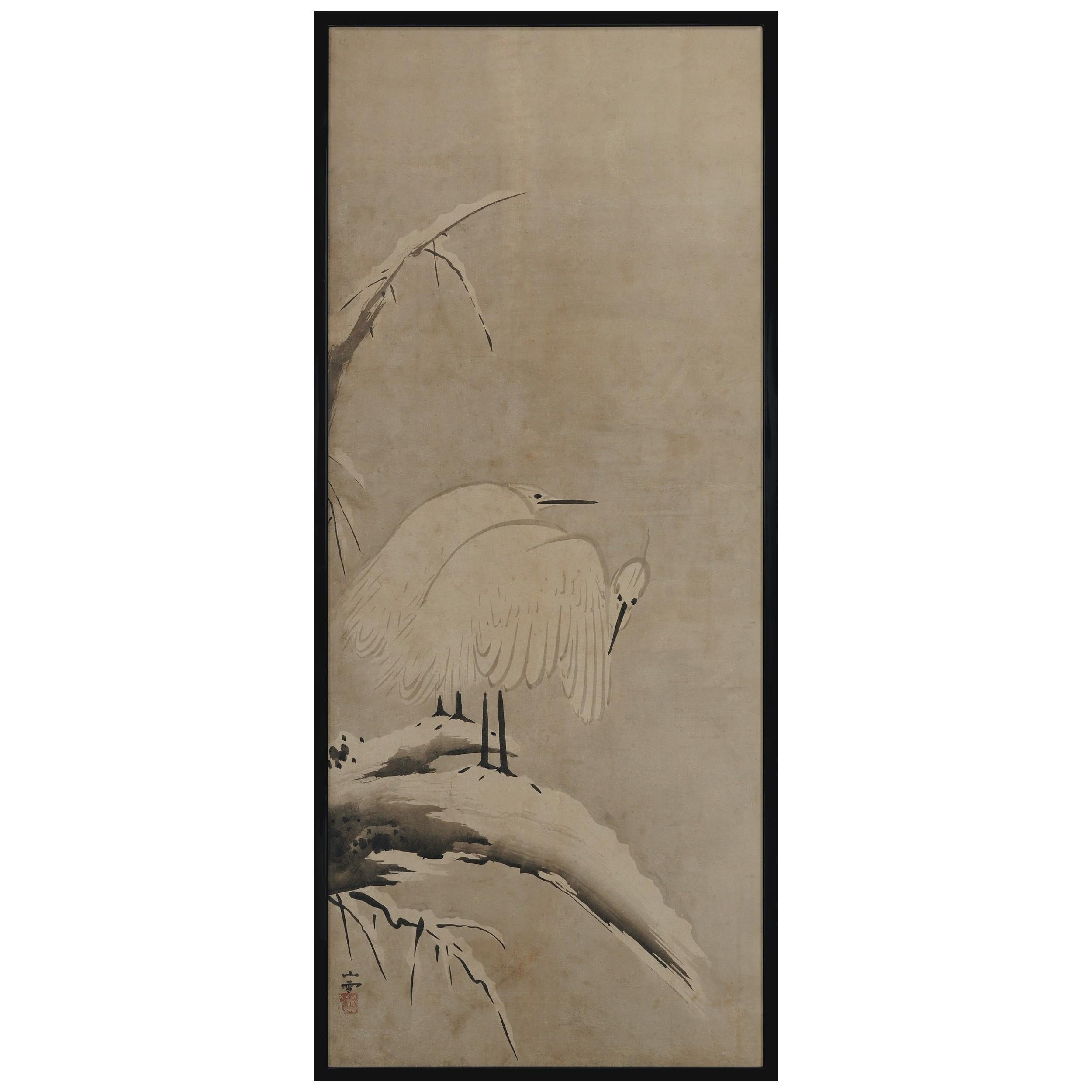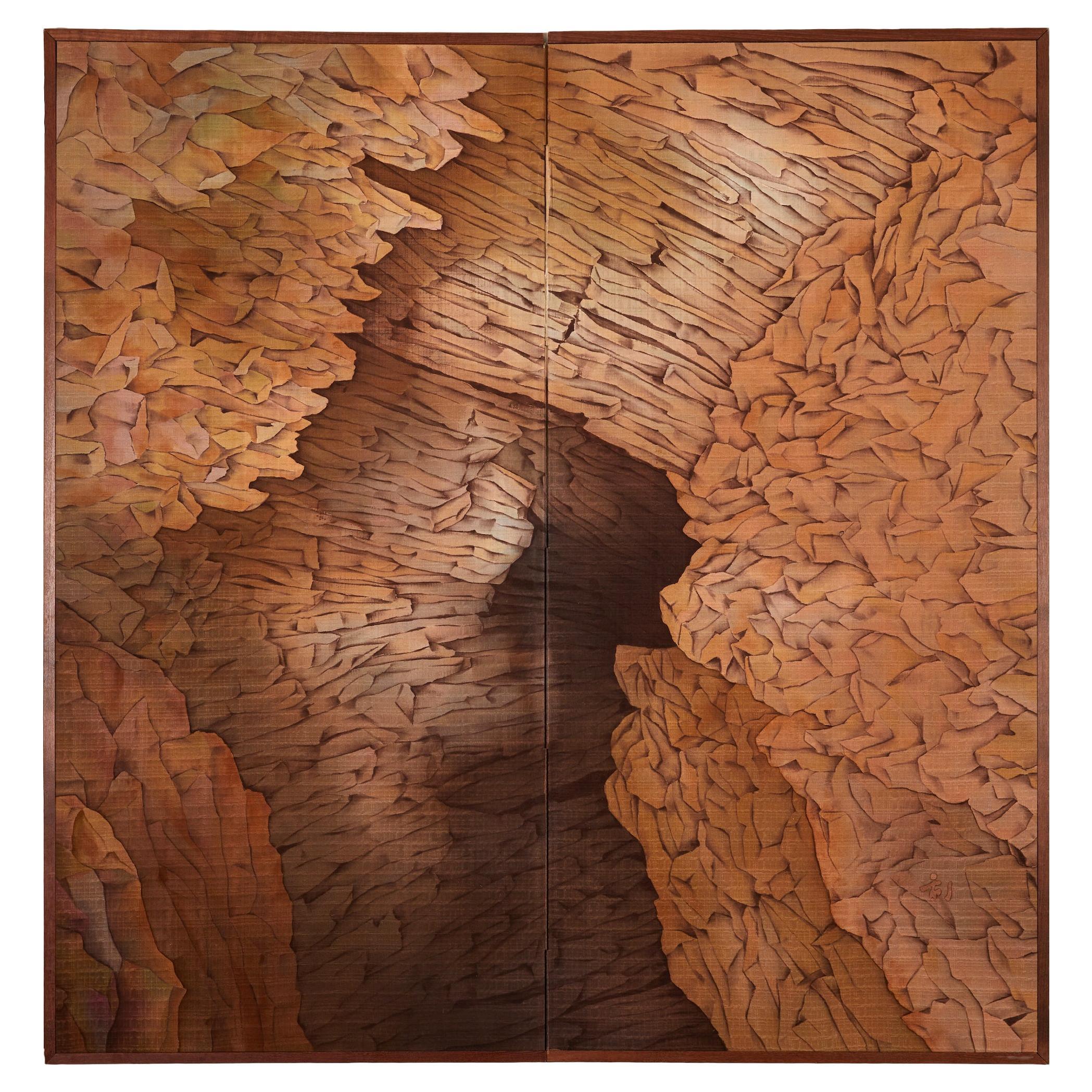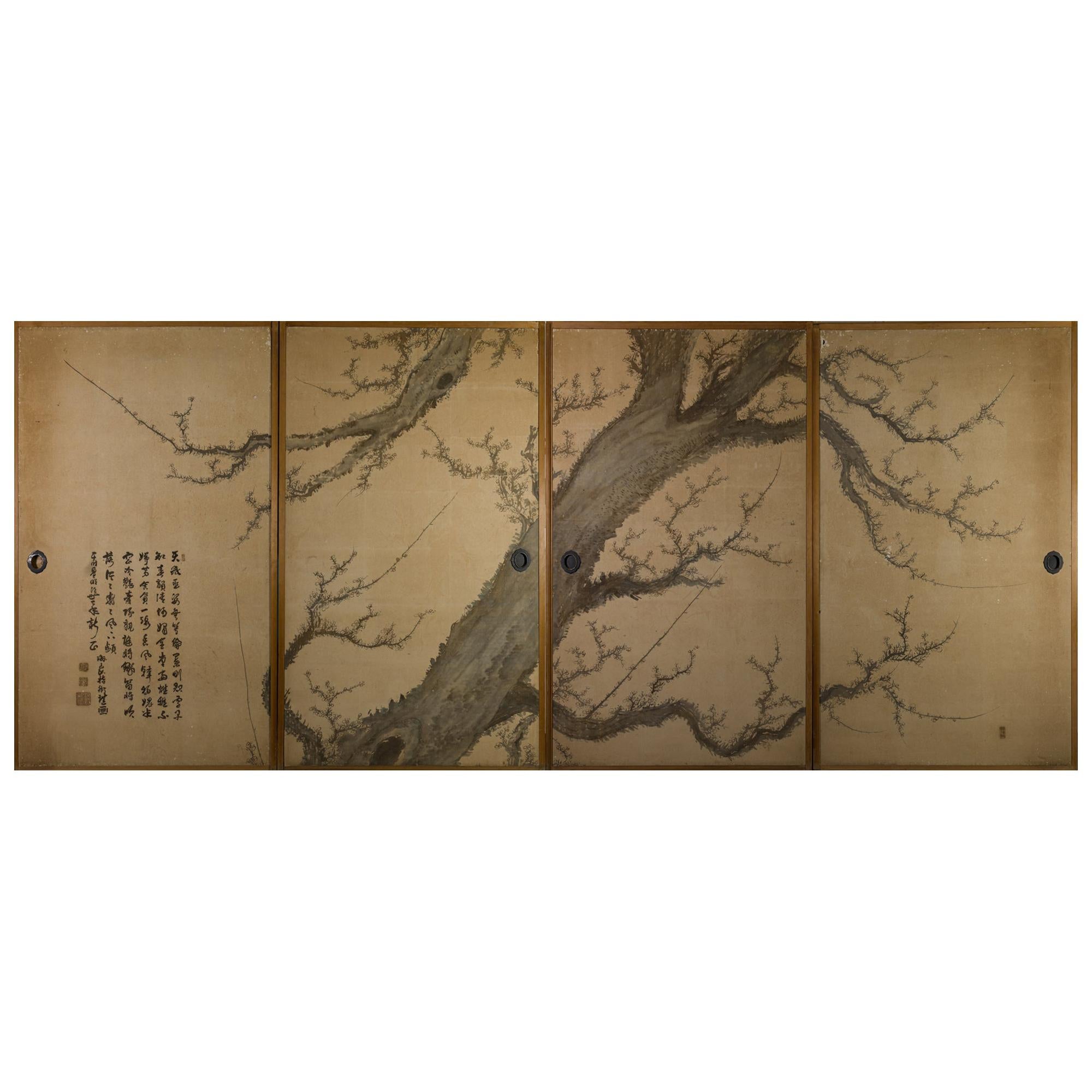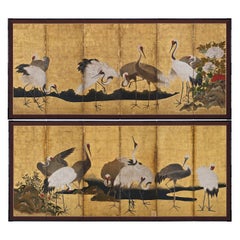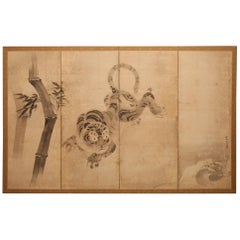
17th Century Japanese Four Panel Screen Leaping Tiger and Bamboo
View Similar Items
Want more images or videos?
Request additional images or videos from the seller
1 of 6
17th Century Japanese Four Panel Screen Leaping Tiger and Bamboo
About the Item
- Dimensions:Height: 60 in (152.4 cm)Width: 94.5 in (240.03 cm)Depth: 0.75 in (1.91 cm)
- Style:Edo (Of the Period)
- Materials and Techniques:
- Place of Origin:
- Period:
- Date of Manufacture:17th Century
- Condition:Most items that are 100 years old have been cleaned or polished in their lifetime. More involved restorations are mentioned in the above description. For a detailed condition report and a video of this item please contact us directly. -Naga Antiques.
- Seller Location:Hudson, NY
- Reference Number:Seller: S11701stDibs: LU855121232512
About the Seller
5.0
Recognized Seller
These prestigious sellers are industry leaders and represent the highest echelon for item quality and design.
Established in 1971
1stDibs seller since 2008
Typical response time: 5 hours
Associations
The Art and Antique Dealers League of AmericaAntiques Associations Members
More From This SellerView All
- 17th Century Japanese Two-Panel Screen, Gibbons of FolkloreLocated in Hudson, NYJapanese two-panel screen: Gibbons of Folklore, Edo period (17th century) Kano School painting of gibbons in Japanese fables. The left panel represents a Japanese fable of a monkey a...Category
Antique Late 17th Century Japanese Edo Paintings and Screens
MaterialsSilk, Wood, Paper
- Late 17th-Early 18th Century Japanese Six-Panel Screen, Battle at Uji BridgeLocated in Hudson, NYJapanese six-panel screen: Battle at Uji Bridge, the first battle at Uji was in 1180 and it marked the start of the Heike Wars. The Genji troops crossed the...Category
Antique Late 17th Century Japanese Edo Paintings and Screens
MaterialsGold Leaf
- Japanese Two Panel Screen: White Tiger GrottoLocated in Hudson, NYA mysterious passageway with natural rocky detail as the scene drifts deep into the darkness. Dyed fabric mounted with a natural wood trim. Signed on back and lower right corner. Sig...Category
Early 20th Century Japanese Paintings and Screens
MaterialsFabric, Wood
- Japanese Four-Panel Screen Four Fusuma 'Sliding Doors' with Venerable PlumLocated in Hudson, NYJapanese four-panel screen: Four Fusuma (Sliding doors) with venerable plum. Four individual fusuma (sliding doors), which can be hung together or separately. Signature and seal on f...Category
Antique Early 1800s Japanese Edo Paintings and Screens
MaterialsBronze
- Japanese Two Panel Screen: Mandarin Ducks and Geese Among Bamboo and FlowersLocated in Hudson, NYJapanese Two Panel Screen: Mandarin Ducks and Geese Among Bamboo and Flowers, Edo period painting (c. 1850) of mandarin ducks and geese on a grassy sh...Category
Antique Mid-19th Century Japanese Edo Paintings and Screens
MaterialsGold
- Japanese Four Panel Screen Banana GroveLocated in Hudson, NYJapanese Four Panel Screen: Banana Grove, early Showa period (late 1920s-1930s) painting of life-size fruiting banana trees in a style that ...Category
Mid-20th Century Japanese Showa Paintings and Screens
MaterialsWood, Paper
You May Also Like
- 17th Century Japanese Screen Pair. Tiger & Dragon by Kaiho YusetsuLocated in Kyoto, JPKaiho Yusetsu (1598-1677) Tiger and Dragon Early Edo Period, Circa 1650 A Pair of Six-fold Japanese Screens. Ink and slight color on paper. Dimensions: Each screen: H. 171 cm x W. 380 cm (67.5’’ x 149.5’’) In this pair of early Edo period Japanese screens a group of tigers prowl in a bamboo grove whipped with fierce wind, while a dragon claws through clouds and mist. The dragon embodies elemental qualities - looming out of the mist, the coils of its body disappearing in the clouds. The dragon is calling for rain, symbolizing spring which is considered the fountain of life. On the other side, the tigers calls for the wind, symbolizing autumn which is considered the end of life. Tigers were familiar motifs within Japanese art from ancient times though the animals were imaginary to the people in the 17th century. While dragons and tigers are usually associated as sacred and ferocious, in this painting, both animals have rather amusing expressions. The tigers appear to glare at the dragon with cat-like eyes, and the look on the swirling dragon’s face appears almost affectionate - lending a playful flair to an otherwise magnificent theme. The tiger and dragon are cosmological symbols of the balancing forces in the world. Screens such as this were originally meant to express the fluctuating nature of the world. For Japanese in the early Edo period, they likely suggested the powers of the cosmos. In Japan the tiger and dragon motif was originally absorbed into the circles of Zen monasteries before spreading into the secular world. The theme especially appealed to the military classes with the Kano school, the official painters to the Shogun and the samurai, being the leading contributors. The painter of this pair of screens, Kaiho Yusetsu (1598-1677), was closely patronized by the third Shogun Tokugawa Iemitsu. In his later years he worked with Kano school artists...Category
Antique Mid-17th Century Japanese Edo Paintings and Screens
MaterialsSilk, Wood, Paper
- 17th Century Japanese Screen Pair, CranesLocated in Kyoto, JPCranes Anonymous, Kano School. Edo period, second half of the 17th century. Pair of six-panel screens. Ink, pigment gofun and gold l...Category
Antique 1670s Japanese Edo Paintings and Screens
MaterialsGold Leaf
$85,000 / set - Japanese Painting, Framed Panel, 17th Century Falcon by Mitani ToshukuBy Mitani ToshukuLocated in Kyoto, JPMitani Toshuku (1577-1654) “Falcon” Wall panel, ink and light color on paper. Upper seal: Mitani Lower seal: Toshuku Dimensions: Each 118.5 cm x 51 cm x 2 cm (46.5” x 20” x .75”) Individual falcon paintings by Mitani Toshuku (1577-1654), an early artist of the Unkoku School. Founded by Unkoku Togan (1547–1618), a master of the Momoyama period, the Unkoku school enjoyed long lasting patronage in southern Japan. Togan was a retainer of the Mori family in present day Yamaguchi prefecture. Members of the school considered themselves to be in the artistic lineage of Sesshu Toyo...Category
Antique Early 17th Century Japanese Edo Paintings and Screens
MaterialsWood, Paper
- 17th Century Japanese Screen. Ink Plum Tree & Birds by Kano Naonobu.Located in Kyoto, JPKano Naonobu (1607-1650) Plum Tree and Birds Six-fold Japanese Screen. Ink and slight color on paper. In this evocative ink work spread over a six-panel folding screen, we see the consummation of the elegance and refinement of the Edo Kano school. This 17th century screen is a rare surviving example of a large-scale bird and flower painting by Kano Naonobu, the younger brother of Kano Tanyu...Category
Antique 17th Century Japanese Edo Paintings and Screens
MaterialsWood, Paper
- Japanese Miniature Four-Panel Screen Blue and Green LandscapeLocated in Rio Vista, CA19th century mid-Edo period Japanese four-panel miniature screen. Depicting a beautifully painted Chinese blue and green landscape in the Nanga School...Category
Antique 19th Century Japanese Edo Paintings and Screens
MaterialsBrass
- 17th Century Japanese Edo Four Panel Screen Hotei with Chinese SagesLocated in Rio Vista, CABeautifully weathered late 17th/early 18th century Japanese edo period four panel byobu screen depicting hotei (fat monk) in a treed landscape with Chinese sages engaged in leisurely...Category
Antique 17th Century Japanese Edo Paintings and Screens
MaterialsBrass
Recently Viewed
View AllMore Ways To Browse
17th Century Japanese Screens
17th Century Bamboo
Tiger Painting Midcentury
Japanese Tiger Painting
Tiger Art On Silk
Silk Tiger Painting
17th Century Kano
Japanese Sea Screen
Japanese Tiger Screen
Japanese Silk Tiger Painting
Chinese Antique Screen
Chinese Antique Screens
Chinese Screens Antique
Chinese Screen Antique
Japanese Panel Paintings
Hand Painted Paneled Screen
Hand Painted Screen Panels
Japanese Panel Art Screen
